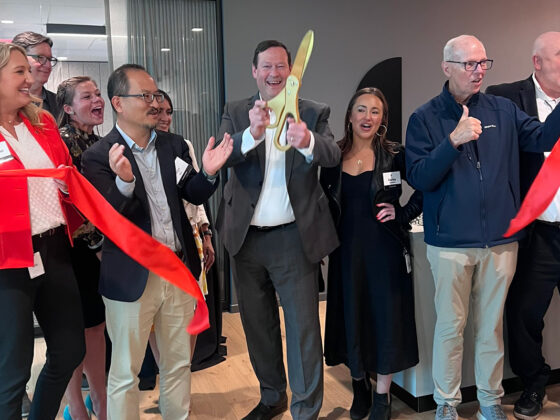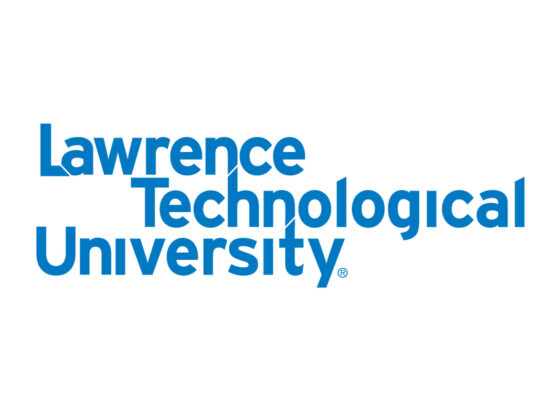 Problem solving through collaboration and exploration along the edge of creativity is, in a nutshell, what the design team at Airea does in an average working day. This Southfield City Centre-based interiors dealership is dedicated to designing and bringing to life innovative and inspiring workspaces for a variety of enterprise, automotive, educational clients and more.
Problem solving through collaboration and exploration along the edge of creativity is, in a nutshell, what the design team at Airea does in an average working day. This Southfield City Centre-based interiors dealership is dedicated to designing and bringing to life innovative and inspiring workspaces for a variety of enterprise, automotive, educational clients and more.
Erica Kimber, director of design at Airea, spends her days meeting with clients, brainstorming creative projects, and reimagining spaces—but mentorship is a big part of her role, too.
As a student at the College for Creative Studies, she interned at Airea for a couple of years before graduating with a degree in interior design in 2011. She remembers the value of her real-life experience for building a broader understanding of the working world, and she enjoys paying it forward to emerging design professionals.
That’s why Airea has worked to develop a strong relationship with Lawrence Technological University. In addition to being a good neighbor, LTU’s strong graphic and architectural design programs cultivate students who are eager to gain practical work experience in their industries.
 Aside from traditional internship opportunities, Airea partnered with LTU to help students recognize their close physical proximity in the City Centre district and to establish projects to augment on-campus learning. Because the company is an interiors dealer, Airea has active partnerships with architecture and design firms, as well as business interiors manufacturer Haworth. In addition to the nut-and-bolts of interior design, there is much for a budding designer to learn about the roles that all of these different entities play in providing services to clients.
Aside from traditional internship opportunities, Airea partnered with LTU to help students recognize their close physical proximity in the City Centre district and to establish projects to augment on-campus learning. Because the company is an interiors dealer, Airea has active partnerships with architecture and design firms, as well as business interiors manufacturer Haworth. In addition to the nut-and-bolts of interior design, there is much for a budding designer to learn about the roles that all of these different entities play in providing services to clients.
“It’s important to us to make sure students and new batches of designers are familiar with what the contract furniture world is all about,” says Kimber. Airea conducts student day events to help these young professionals learn more about products made by Haworth.
These connection opportunities allow students and companies to size one another up and develop a deeper understanding of what they can each bring to the table.
“Everyone is looking for the next batch of the most talented designers in the industry. Having this real-life experience and seeing who stands out is appealing to these firms,” says Kimber.
Double-layered education
 Through cultivated partnerships, LTU offers a double-layered educational experience for students, says Christopher Stefani, adjunct faculty in interior architecture and associate director for the LTU’s Detroit Center for Design + Technology. The college’s studio course is a one-semester deep dive into the practice of design.
Through cultivated partnerships, LTU offers a double-layered educational experience for students, says Christopher Stefani, adjunct faculty in interior architecture and associate director for the LTU’s Detroit Center for Design + Technology. The college’s studio course is a one-semester deep dive into the practice of design.
“Academically, we are pushing rigor and simultaneously working with the real end-users and clients to understand limitations in the professional world,” says Stefani. Through professional collaborations, students develop the skills to pull together a design, and partners can leverage fresh ideas, emerging technologies, and things that have a high cost to implement inside a company.
For companies, collaborating with an LTU studio make a lot of sense.
“It’s more cost effective to sponsor a studio and get the brain-share of 10 to 12 young emerging professionals than it is to pay a quarter of the salary of a new professional,” he says.
At Airea, for example, the studio course challenged each student to design their own version of a 4,000 square foot office space. “For students, the beauty of this is they get access to real-world resources and really build an understanding of the concept of costing and variables of design. It’s an opportunity for practicality, so we aren’t putting students into the real world with pie-in-the-sky ideas,” says Stefani.
“Our goal is to release professionals, who are able to be leaders, carry on conversations at a high level, and think holistically past the surface.”





